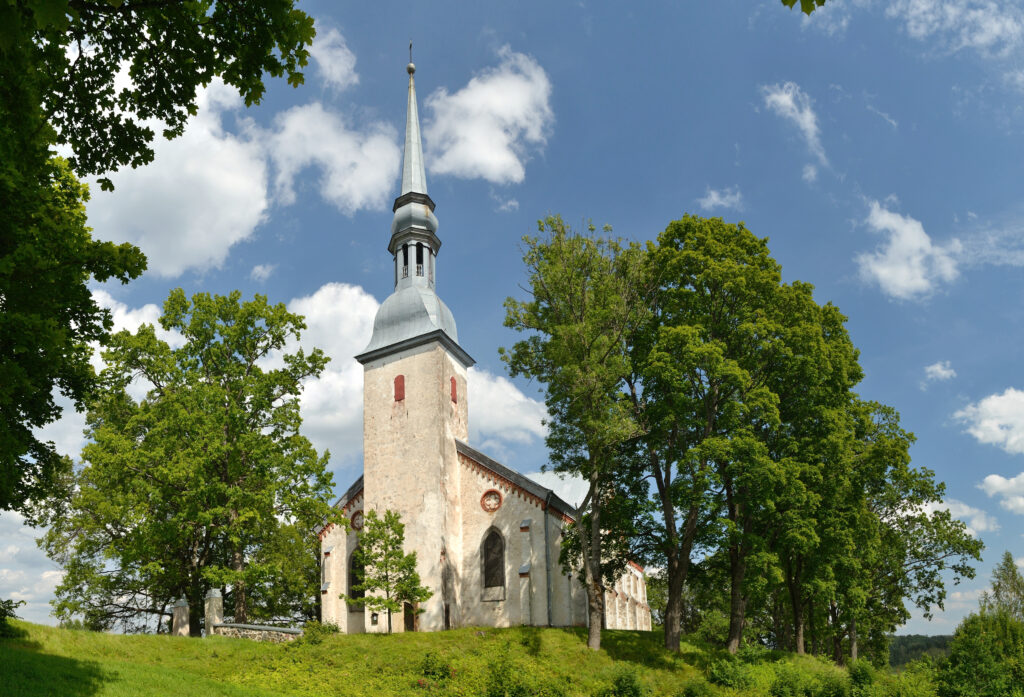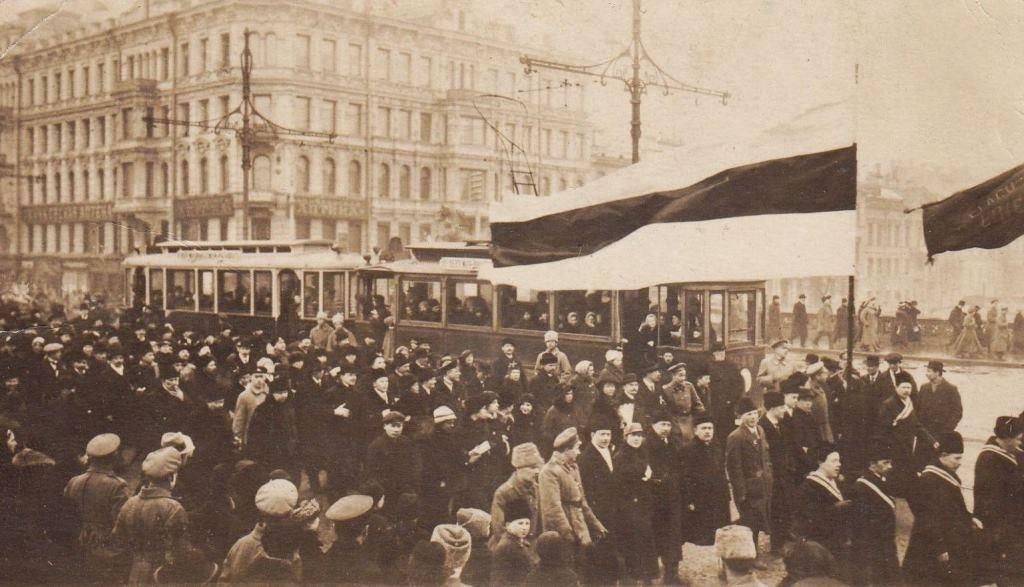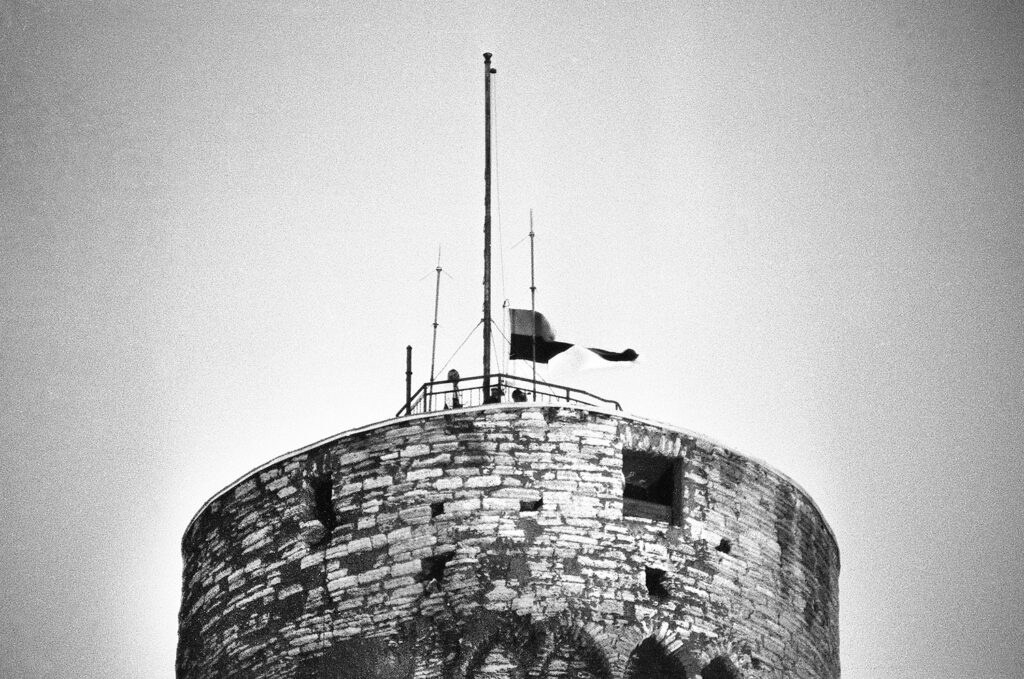On 4 June 1884, the Estonian Student Union adopted blue, black and white as the colours of their fraternity; the date is now celebrated as Flag Day in Estonia*.
The Estonian flag has its origins in the national movement – on 4 June 1884, the Estonian Students’ Association adopted blue, black and white as the colours of its student fraternity. The flag officially became the Estonian national flag in 1918. Since then, the tricolour has become one of the most important symbols of the independence, consciousness and solidarity of the Estonian people.
The birth of the Estonian tricolour is connected with the Estonian awakening – the national flag is the same age as the political history of its people. The tricolour was born in the academic and national-romantic atmosphere of the University of Tartu in the last quarter of the 19th century.
Blessed in semi-secret
The exact colour combination of blue, black and white was used for the first time at the foundation of the “Vironia” Society (now the Estonian Students’ Society) at the University of Tartu on 29 September 1881. The first flag was handmade in the spring of 1884 by Paula Hermann, the wife of doctor Karl August Hermann, an honorary member of the student society. The flag was made in Tartu, in the kitchen of the Hermanns’ house in Veski Street.

There are several interpretations of the national colours. According to the most popular one, blue represents the reflection of the sky in the lakes and the sea, symbolising perseverance – “until the sky lasts”; black represents the black cloak of an Estonian or the earth that nourishes the people; white represents the striving for light and purity.
As appearances with this flag were forbidden in Tartu, as Estonia was then under the rule of Imperial Russia, the flag was blessed at a semi-secret church service in Otepää on 4 June 1884. The last song of the service was “Mu isamaa, mu õnn ja rõõm” (“My homeland, my pride and joy”, now the national anthem).

A national symbol
Due to the hostility of both the local Baltic German and Russian central authorities, the chances of openly displaying the Estonian tricolour were rather limited. Nevertheless, the flag became a beloved image not only of Estonian students but of the entire nation.
For Estonians, the political meaning of the tricolour strengthened at the demonstrations of the 1905 Russian Revolution. On the day before the seventh Estonian Song Festival in 1910, numerous houses were decorated with national flags until local authorities demanded their removal.
The blue, black and white flags of Estonian student organisations and soldier groups were waved at the great Estonian manifestation and parade demanding Estonian autonomy in Petrograd (formerly St Petersburg) in 1917. Following this manifestation, Estonia was the only country to be granted autonomy by Imperial Russia. After the new autonomy, soldiers and citizens were seen wearing tricolour badges and ribbons.

On 24 February 1918, Estonia declared its independence under the tricolour. The provisional government of the Republic of Estonia declared the blue, black and white tricolour the official national flag on 21 November 1918. The flag was hoisted for the first time as a national symbol at the Pikk Hermann Tower in Tallinn on 12 December 1918.
But after the Soviet occupation of Estonia in 1940, Estonian national symbols were forcibly replaced by Soviet ones. Raising the Estonian flag, or even possessing the tricolour, was considered a crime for which some people were arrested or sent to Soviet prison camps, where they eventually died.
Communities in exile keep the flag flying high
But the colours lived on in the free world. In the early autumn of 1944, tens of thousands of Estonians fled their country to escape persecution and deportation by the advancing Soviet forces, establishing large exile communities in Sweden, Canada, the US and Australia.
The expatriates retained the tricolour and other national symbols and promoted their use at every opportunity. The 100th anniversary of the Estonian flag was celebrated in exile.

Following the Soviet perestroika, a political reform movement within the Communist Party of the Soviet Union, a strong Estonian national awakening took place, culminating in massive open-air rallies and concerts in 1987 and 1988, where the national tricolour was once again openly waved.
The Singing Revolution of the late 1980s and the weakening of Soviet power over Estonia paved the way for the raising of the blue, black and white Estonian flag to the top of the Pikk Hermann Tower on 24 February 1989, before Estonia officially regained its independence from the Soviet Union in August 1991.

This article was originally published on 4 June 2015 and lightly edited on 4 June 2024.


23) Klassikaline Eesti
Tasuta online E-Nalandat Research and Practice Ülikool
Sõbralikult RENDER ÕIGE TÕLGE seda oma CLASSICAL emakeel ja kõik tõlked sa tead ja Avalda.
Palun saatke koopia
threepitaka@gmail.com
chandrasekhara.tipitaka @ gmail.com
awakenmedia.prabandhak @ gmail.com
Budism KOKKUVÕTE!
Ei ole Evil!
ALATI teha head
Ole tähelepanelik!
– Lihtne ja aastat vana poiss ARU
Kuid raske FOR 70-aastane noormees praktikasse!
Tipitakas on 3 baskets.1) Basket distsipliini (Vinaya), 2) diskursuste (Sutta) ja 3) Ultimate doktriin (Abhidhamma) Pitakas.
CJI, shirked oma kohust ja teinud tõsist viga kohtuotsus saatuslik löök riigi democracy.He ei
järjekorras.
CJI
ei mõista, et selle ajani, see uuem seatud umbes 1300000 hääletamine
masinad on valmistatud täielikult ja rakendada täielikult,
CJI ei tellimustööna hääletamissedeli süsteem oleks endasse No selline ettevaatusabinõu oli otsustatud tipu kohus.
RSS on
Hr Mohan Bagawath, braahmin väljalangemise ja mitte põhiseaduse
Ekspert ütleb, et seal ei tohiks olla seisuse aluseks reservatsiooni.
RSS öeldes ei broneering alusel kastidesse tähendab, et on vastu põhiseaduse, mis tagab broneeringu SC / ST / OBCs.
Hr Narendra Modi täis vihkamist mitte-braahmin ja mitte-Baniya
joobes võimu rikkus kõik hea Silas ei tapa, valetamine,
varastamine.
Mr.Modi ja tema meeskond ei tohi tunnustavad kõik inimesed 80 demokraatiad maailmas, kes lihtsalt teinud ära
fradulent evms
23) Classical Estonian
FREE ONLINE E-Nālanda Research and Practice University
KINDLY RENDER CORRECT TRANSLATION TO THIS IN YOUR CLASSICAL MOTHER TONGUE AND ALL THE OTHER LANGUAGES YOU KNOW AND PUBLISH.
Please send a copy to
threepitaka@gmail.com
chandrasekhara.tipitaka@gmail.com
awakenmedia.prabandhak@gmail.com
BUDDHISM IN A NUTSHELL !
DO NO EVIL !
ALWAYS DO GOOD
BE MINDFUL !
– EASY FOR A & YEARS OLD BOY TO UNDERSTAND
BUT DIFFICULT FOR A 70 YEARS OLD MAN TO PRACTICE !
Tipitaka is of 3 baskets.1)Basket of Discipline (Vinaya),2) of Discourses (Sutta) & 3) of Ultimate Doctrine (Abhidhamma) Pitakas.
CJI, shirked its duty & committed a grave error of judgment dealt a fatal blow to the Country’s democracy.He did not
order.
CJI
did not order that till the time this newer set of about 1300000 voting
machines is manufactured in full & deployed totally,
CJI did not order for ballot paper system would be brought in. No such precautionary measure was decreed by the apex court.
RSS’s
Mr. Mohan Bagawath,a brahmin a dropout & not a Constitutional
expert says that there should not be any caste based reservation.
RSS saying no reservation on the basis of castes means it is against Constitution that provides reservation for SC/ST/OBCs.
Mr. Narendra Modi full of hatred for non-brahmin & non-baniya
intoxicated for power violated all good Silas not killing, lying,
stealing.
Mr.Modi & his team must not be recognised by All the people in 80 democracies in the world who simply done away with
fradulent EVMs